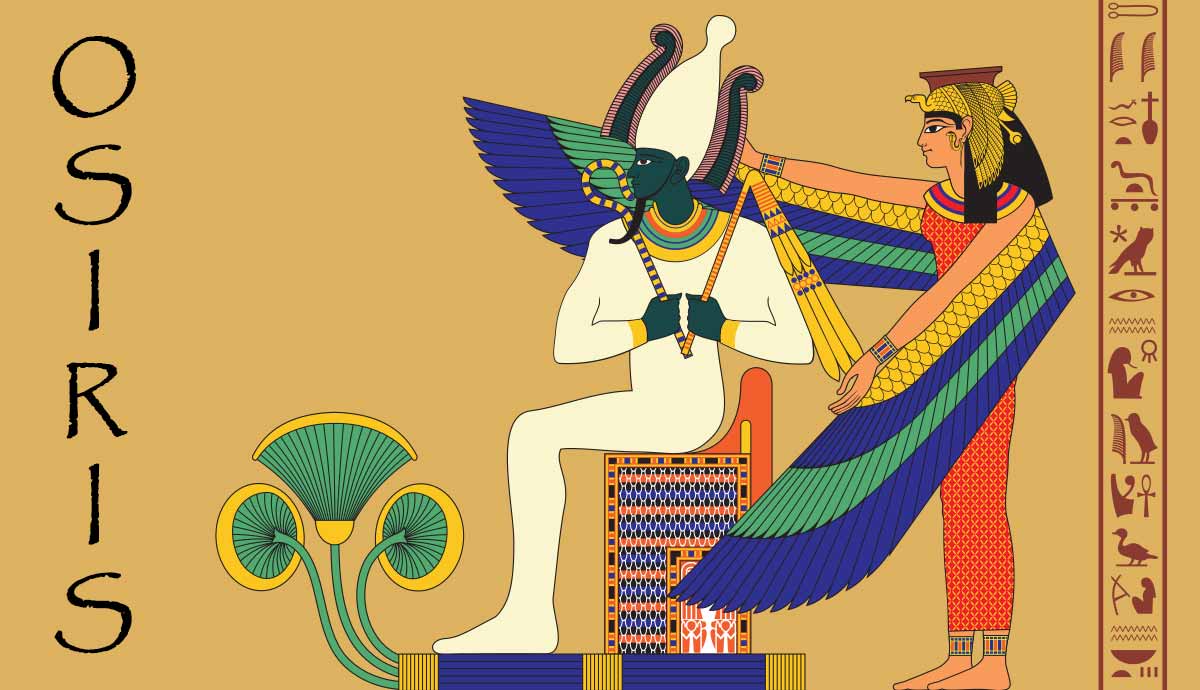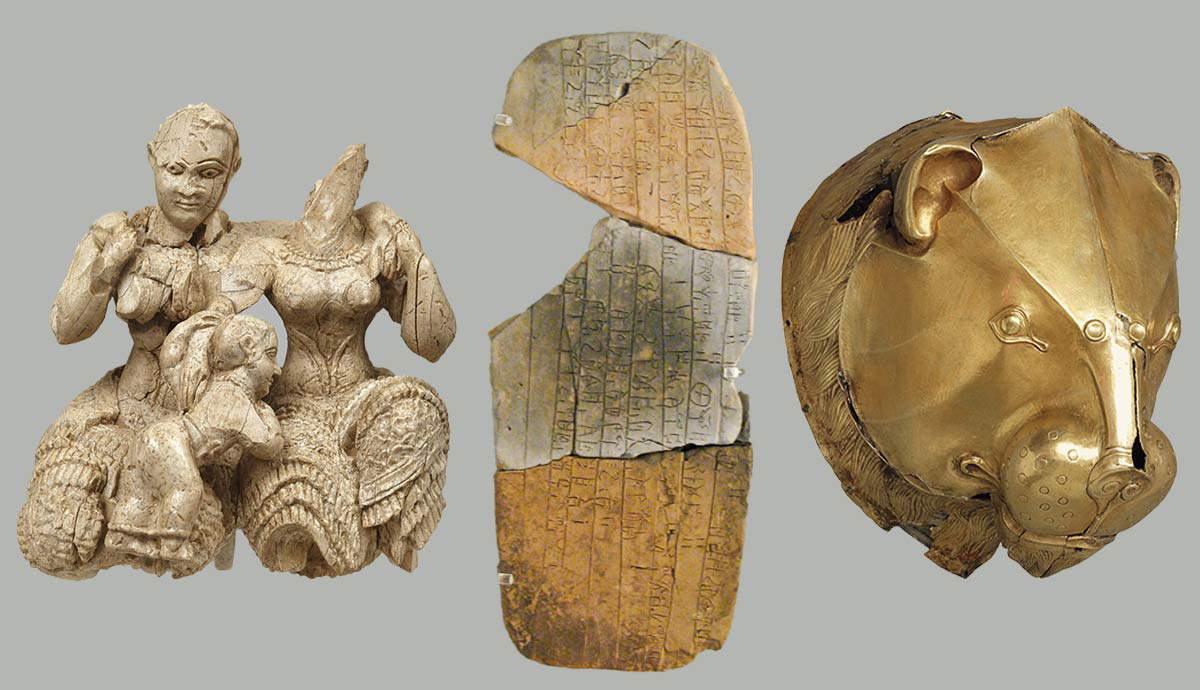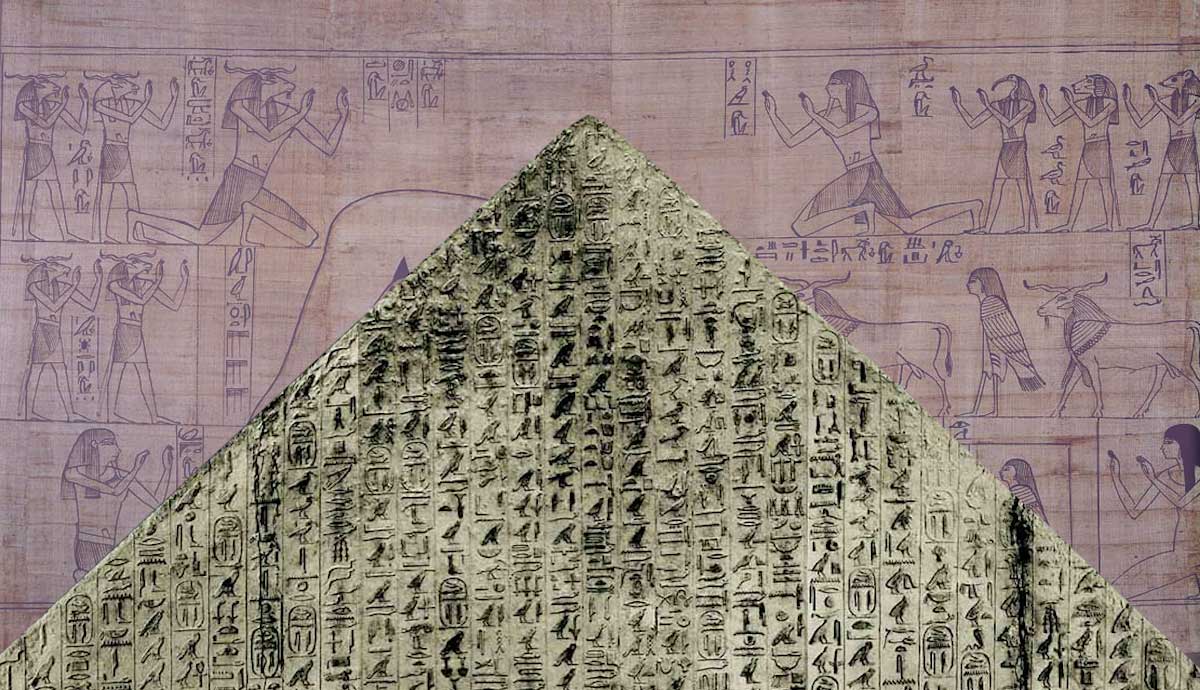
Osiris is best known as the god of the dead in ancient Egyptian religion, as the afterlife was created for Osiris after he was killed by his brother Set, and he enabled others to join him in eternal life. But Osiris is also connected to many other important aspects of ancient Egyptian religion.
Osiris was a part of one of the most important divine pantheons and creation myths as the first pharaoh, and, alongside his wife and son, represented continuity within kingship. He was also associated with fertility, both teaching the ancient Egyptians the art of agriculture and establishing or reflecting Egypt’s natural fertility cycles with his life, death, and rebirth.
What Are the Origins of Osiris?

Osiris seems to have been an old Egyptian god, as there is evidence of his worship from at least the 5th Dynasty (25th century BCE) when he is mentioned in the Pyramid Texts. He probably has Predynastic origins. Some Egyptologists believed that he may have originally been a real person in Predynastic times, a shepherd turned ruler who became venerated as a god. It is suggested that the crook and flail, a symbol of the pharaoh since the earliest times, originated from Osiris.
Osiris was incorporated into the Ennead of Heliopolis, a group of nine deities held in the greatest esteem by the priests of the nome territory of Heliopolis (part of modern Cairo). They rose to prominence during the Old Kingdom and continued to be important until the Ptolemaic Period, though they competed with gods venerated by other important cities.
In their creation story, the primordial waters that existed at the beginning of time were personified by Nu. A mound emerged from those waters and upon the mound sat the self-begotten god Amun, who was equated with the sun god Ra. Amun then spat or masturbated to produce Shu, the personification of air, and Tefnut, the personification of moisture. These siblings mated and produced Geb, the earth, and Nut, the night sky.
Geb and Nut then gave birth to four children, Osiris and Isis, who would marry, and Set and Nephthys, who would also marry. As the oldest, Osiris was given rulership of the earth and the netherworld, occupied by the gods.
Transformation of Osiris

The fullest version of the Osiris myth is told by the Greek historian Plutarch (c. 46-120 CE). It ties together the evidence from earlier periods, but there are different versions of some elements of the story.
According to the myth, Osiris’s younger brother Set was deathly jealous of the respect that Osiris enjoyed. This jealousy festered inside Set until he decided to kill his brother. How exactly Set killed Osiris is one of the plot points that varies.
In one story, Set invited Osiris to a party, during which he offered the prize of a beautiful chest to whomever could fit inside. Of course, it was perfectly sized for Osiris, and as soon as he lay down, Set slammed down the lid and trapped him inside. He then threw the chest into the Nile, and Osiris drowned. His body eventually washed up on the shore of Byblos in Lebanon, where a tree sprouted from his chest. Isis transformed herself into a kite bird and found Osiris’s body, and then used her magic to reanimate him.
In another version, Set killed Osiris and then hacked his body to pieces and buried the pieces in different parts of Egypt. He may have cut up the body after Isis initially retrieved the body from Byblos. Isis set about collecting the scattered pieces, and found all of them except Osiris’s phallus, which had been swallowed by a fish. She then reassembled the body, and Isis and Nephthys turned themselves into kite birds, flapping their wings to breathe life back into the body.

Osiris’s sister-wife Isis is the principal actor in the resurrection of Osiris. She led the search for his body and used her magic to bring him back to life. But Osiris and Isis’s other sister Nephthys is always cast alongside her sister in the story. According to some accounts, Nephthys was part of Set’s initial plot to overthrow Osiris. But she is always described as helping her sister to restore Osiris to life. In rituals carried out by the ancient Egyptians in imitation of Osiris’s resurrection, it is always both Isis and Nephthys who are represented as his mourners.
To bring Osiris back to life, Isis invented the process of mummification with the help of Anubis. In some stories Anubis is the son of Osiris and Nephthys, who was convinced to seduce Osiris by Set. Nephthys sent the baby away for fear of Set, but he was adopted by Isis and became her ally.
Osiris was sufficiently restored to life that Isis could become pregnant by him, but it was not enough to truly bring him back to life. Therefore, the underworld was created for him, allowing him to live on after death. Isis would then give birth to Horus, who would grow up and avenge his father, expelling his uncle and taking up Osiris’s previous rulership.
Osiris as a Chthonic Deity

When the underworld, also known as the Duat, was made for Osiris, he became the ruler of this new realm. This earned him the name “Lord of Silence” and “Foremost of the Westerners” as the dead were often called westerners.
Others could enter the Duat through sympathetic magic, by imitating the treatment of Osiris’s body. This led to the development of mummification and burial practices, as well as the invention of charms and spells to help the dead pass into eternal life.
Initially it was only the pharaoh who could enter the Duat, but over time, access to the afterlife became democratized. As this happened, the Egyptians also developed the belief that the gods protected the underworld by testing people before they entered. The idea of the judgment by 42 divine judges emerged. The deceased made 42 negative confessions, one for each judge, affirming that they had not sinned in life. Their heart was then weighed against Ma’at, a complex concept representing truth, balance, and harmony. Ma’at was both a goddess and a feather that was placed on the scales against the heart.
As the king of the underworld, Osiris was the ultimate judge and would welcome those who passed into the afterlife. Those who failed the test were devoured by a monster named Ammit and became nothing.

Once they passed into the Duat, the dead were invited to live in the “Field of Rushes,” which was an idyllic reflection of the real world where they lived alongside the gods. Everyone was granted fertile lands to maintain, which they did using shabtis figures as laborers.
Osiris is typically depicted with green skin, which indicates his status as dead, and the lower part of his body is mummified. He has a pharaoh’s beard and holds the typical pharaonic crook and flail, as a previous ruler of the world and current ruler of the underworld. He also wears something called the Atef crown, which looks like the white crown of upper Egypt, but with two curling ostrich feathers. This is presumably the crown of the underworld.
Rulership and Succession

Together, Osiris, Isis and Horus became important representations of kingship, and the continuity between pharaohs that the Egyptians relied on for stability and prosperity. Osiris was the first pharaoh, and he was succeeded by his son Horus, and the two are tied together by Isis, who is sister, wife, and mother.
The reigning Egyptian pharaoh was seen as the mortal incarnation of Horus, and he would become one with Osiris after death after undergoing the proper rituals. The women in the royal household were identified with Isis, as the female aspect that ensures the continuity of the pharaonic line. The importance of the three gods to kingship and succession is apparent from the many depictions of the three together, often receiving offerings from the pharaoh.

In Ptolemaic Egypt, the worship of various triads of deities, always a male, a female, and a child, became common. Osiris, Isis, and Horus was one of the most popular combinations, with Horus appearing as a youth, identified by his childhood lock, and called Harpokrates, “Horus the Child.”
This triad was particularly popular at Abydos, one of the oldest cities in ancient Egypt. It is known to for having a necropolis for early pharaohs, and the Abydos King List, an inscription in the Temple of Seti I (c. 13th century BCE) that lists the names of 76 pharaohs of Egypt from Menes (c. 3200 BCE), the founder of the 1st dynasty, to Seti’s father.
Abydos, located in Upper Egypt, was originally the cult center of the ancient deity Khentiamentiu, a chthonic god who merged with Osiris. His temple in Abydos was transformed into the Great Temple of Osiris and was one of the god’s main cult centers. Archaeologists have identified that between the 1st and the 26th dynasties, nine or ten successive temples were built on the same spot in the city. The first was a small enclosure made from unbaked bricks, but it gradually transformed into a massive stone enclosure with an elaborate indoor waterway.
Osiris also had a great temple in the Delta, built in the 3rd century BCE, at a place called Taposiris Magna, which means “the temple of the tomb of Osiris.” Another temple of Osiris has been located at Dendera, again in Upper Egypt. An inscription there suggests that clay models of each piece of Osiris were sent out by Isis to where they were found across Egypt and that a temple of Osiris was established in each of these cities.
The Ba of Osiris and Fertility

Part of Osiris’s soul, known as his ba, was also independently worshiped. The Egyptians believed that the soul was composed of many parts, and the ba was the personality, or whatever makes the person unique. It was this aspect of the soul that the Egyptians believed lived on after the body died.
The ba of Osiris was sometimes worshiped as a ram god called Banebdjedet. This literally means the ba (which also means ram) of the lord of djed, which is believed to represent the spine of Osiris. According to one story of Osiris’s death where his body ended up in Byblos, a tree grew out of Osiris’s chest and enclosed his coffin. A fine tree, the local king had it cut down and made into a pillar for his palace. Isis traveled there and requested the pillar, from which she extracted the coffin. She then consecrated the pillar, creating the djed.
During the Sed festival, the jubilee celebration for the pharaoh, the djed was often raised to represent the triumph of Osiris over Seth. This ceremony always took place during the period when the fields were sown, suggesting that it was also a symbol of fertility. The djed was often used to make amulets, for both the living and the dead.

Osiris’s major festival was also celebrated over the space of two weeks at the start of planting season. It involved many fertility rituals, such as the construction of Osiris beds formed in the shape of Osiris and filled with soil and sown with seeds. The germinating seeds represented Osiris’s resurrection and the return of growth to Egypt. The association with Osiris and fertility seems to date back to his Predynastic origins. But there is also a nod to it in versions of the Osiris myth, which say that when he first reigned, Osiris taught mankind how to grow and harvest crops.
Apis-Osiris and Serapis

Osiris was also linked to the Apis bull, a sacred bull that lived in Memphis. The bull served many different purposes over the centuries including as an intermediary between humans and the gods and as an oracle through the interpretation of its actions. When a bull died, there was a process to identify a new bull that would take its place, and the old bull was mourned, mummified, and buried. It became Apis-Osiris, becoming one with Osiris.
Many historians believe that it was this Apis-Osiris that transformed into the god Serapis, a deity introduced to Egypt by the Hellenistic Ptolemaic Dynasty to create a patron deity that would be acceptable to both the native Egyptian population and the new Greek residents. The god would then be enthusiastically adopted by the Romans when they conquered Egypt. They would eventually build nine temples of Serapis and Isis in Rome. Lending support to a connection between Serapis and Osiris-Apis, excavations of a Serapeum at Saqqara found more than 60 bulls buried there between the 14th and 1st centuries BCE.
A new temple of Serapis was established at the Ptolemaic capital of Alexandria. The god was represented in human form, since the Greeks disdained animal gods. Serapis adopted chthonic elements from both Osiris and the Greek god of the underworld Hades. However, he was also linked with the Greek god Dionysus, associated with benevolence and joy. Like Osiris, Serapis held a scepter, as a sign of leadership, but like Hades, he was accompanied by Cerberus, a three-headed dog that guarded the underworld.
Worship of Osiris and Isis would continue in Egypt until at least the 5th century CE, well after Roman imperial decrees ordered that all temples to the pagan gods across the empire close.










